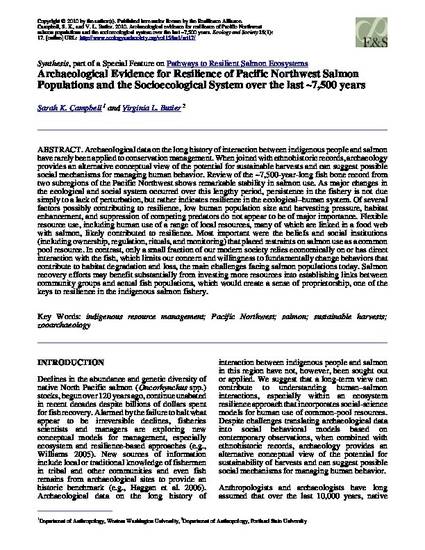
- Indigenous resource management,
- Pacific Northwest,
- Salmon,
- Sustainable harvests,
- Zooarchaeology
Archaeological data on the long history of interaction between indigenous people and salmon have rarely been applied to conservation management. When joined with ethnohistoric records, archaeology provides an alternative conceptual view of the potential for sustainable harvests and can suggest possible social mechanisms for managing human behavior. Review of the ~7,500-year-long fish bone record from two subregions of the Pacific Northwest shows remarkable stability in salmon use. As major changes in the ecological and social system occurred over this lengthy period, persistence in the fishery is not due simply to a lack of perturbation, but rather indicates resilience in the ecological–human system. Of several factors possibly contributing to resilience, low human population size and harvesting pressure, habitat enhancement, and suppression of competing predators do not appear to be of major importance. Flexible resource use, including human use of a range of local resources, many of which are linked in a food web with salmon, likely contributed to resilience. Most important were the beliefs and social institutions (including ownership, regulation, rituals, and monitoring) that placed restraints on salmon use as a common pool resource. In contrast, only a small fraction of our modern society relies economically on or has direct interaction with the fish, which limits our concern and willingness to fundamentally change behaviors that contribute to habitat degradation and loss, the main challenges facing salmon populations today. Salmon recovery efforts may benefit substantially from investing more resources into establishing links between community groups and actual fish populations, which would create a sense of proprietorship, one of the keys to resilience in the indigenous salmon fishery.
